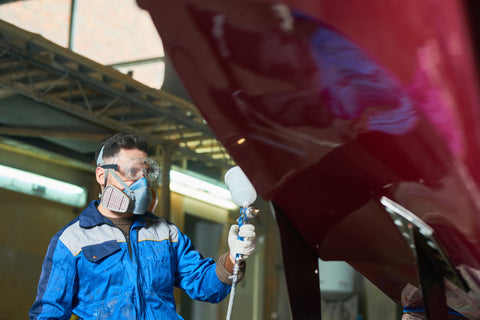Yacht varnish is a specialized type of varnish that is often used on boats. It has several advantages over conventional varnish, which is why it is becoming more and more popular among boat owners. In this guide, we will discuss the benefits of yacht varnish. We will also answer some common questions about yacht varnish. So if you are interested in learning more about this topic, keep reading!
Why Yacht Varnish is Different from Conventional Varnish?Yacht varnish is a type of varnish specifically designed for boats. It is typically made from a tougher resin that can withstand the harsh conditions that boats are exposed to, such as salt water and sunlight.
Yacht varnish also often contains UV inhibitors to help protect the wood from fading and other damage caused by exposure to sunlight.
Conventional varnishes are not as durable as yacht varnish and will not stand up to the same conditions. This makes them less suitable for use on boats. However, they can still be used for other applications, such as furniture or around the garden.
Which types of varnish to use on my boat?
Marine varnish can be divided into three different types, each with its own perfect uses. Yacht owners choose to use one or all of these types for better performance.
The main three types of varnishes are:
Tung Oil-based varnish
Is the most popular type among yacht owners who take boat maintenance seriously. International Schooner or Goldspar Boat Varnish are both oil-based varnishes that coats the wood evenly leaving a smooth finish while requiring minimal preparation work before it can be applied.
This only requires a couple of coats. Is advisable to lightly sand the surface between coats to achieve the highest quality glossy finish.
The smooth, high gloss finish will protect teak parts from water stains and help to maintain their appearance over time! Its UV protection helps prevent mould growth too which is especially important in wetter climates. Oil-based varnish is easy to apply and can be repaired by sanding and re-oiling the wood, meaning it will last longer than other conventional varnishes.
It's also easier to apply compared with water-based yacht varnish which requires no sanding or priming before application.
Water-based boat varnish
Often used on marine boats where there is not much exposure to agitation or rubbing, making oil-based varnish too heavy for use. This yacht varnish type tends to leave a thin, powdery residue that needs sanding down after drying but offers better penetration into the wood than its oil counterpart.
Polyurethane boat varnish - is much more hard-wearing than oil or water-based yacht varnishes. Stronger than oil-based or water-based yacht varnish, polyurethane yacht varnish tends to dry quickly and offers an ultra-hard surface that is resistant to impact, scratching and denting.
This yacht varnish type has a high gloss tough finish so it's best suited for areas of the boat that are exposed to more wear and tear. This type of varnish can also be divided into two categories as one part polyurethane boat varnish and two-part polyurethane varnish.
One Part Polyurethane Varnish
The yacht varnish that is most commonly used for yacht paint jobs. The yacht varnish offers a quick drying time and can be easily re-coated within hours between each coat. It should be noted that due to its rigidity it is not recommended to be used for painting highly flexible wooden areas as it might crack in time leaving the wood exposed to elements.
Two-Part Polyurethane Varnish - is the varnish with longer working times, making it easier to apply on larger boats. It's advisable to use only one part polyurethane yacht varnish for smaller projects as two-part yacht varnishes tend to leave an unprofessional finish when applied by hand.
This type of varnish is extremely tough and consists of two products mixed together. It offers very good protection from moisture and UV damage but the same as the above this is not suitable for some areas on your yacht (such as spars) and it will crack as the wood moves and will leave the wood exposed to the elements.
Is yacht varnish waterproof?
Yes, yacht varnish is typically waterproof. This makes it a good choice for protecting boats from the elements. It can also help to keep the wood of the boat looking its best for longer.
Does yacht vanishes need a primer?
No, yacht varnish does not typically need primer. However, it is a good idea to test it on a small area of the surface you are going to varnish to make sure it adheres properly. If you do decide to use primer, make sure it is designed for use with yacht varnish.
Does yacht varnish seal wood?
Yes, yacht varnish seals the wood. It forms a protective barrier that helps to keep the wood from damage and keeps it looking its best for longer.
How long does yacht varnish last?
The lifespan of yacht varnish varies depending on the brand and the conditions it is exposed to. However, it typically lasts for several years, anywhere from two to three years before you need to apply a new coat or two. Some varnishes obviously last longer than others depending on the area where they will be applied.
Which is better? Woodstain or yacht varnish?
There is no simple answer to this question as it depends on the specific application and the needs of the user. However, in general, yacht varnish is a better option for protecting wood from the elements and keeping it looking its best. It is also typically more durable than wood stain, which makes it a better choice for boats.
Why is it important to sand between coats?
It is important to sand between coats of yacht varnish because it helps to create a smooth, even surface. This makes the final coat of varnish look its best and helps to protect the wood from damage.
How many coats should I apply?
The number of coats you should apply depends on the specific product you are using and the area you are varnishing. In general, two to three coats are sufficient. However, it is always a good idea to follow the manufacturer's instructions for the best results.
What type of finish can you get?
There are three types of finish on boat varnish: gloss, semigloss, and satin. Each one has its own benefits and drawbacks, so it is important to choose the one that best suits your needs.
Gloss finish is the most durable, but it is also the most reflective. This can make it difficult to see in bright sunlight.
The semigloss finish is less reflective than gloss, but it is still quite durable. It is a good choice for areas that receive moderate amounts of sunlight.
The satin finish is the least reflective and also the least durable. However, it can provide a more natural look to the wood. It is a good choice for areas that do not receive a lot of sunlight.
Can you paint yacht varnish over wood stain?
Yes, you can put yacht varnish over the wood stain. However, it is important to make sure that the stain is fully dry before applying the varnish. Otherwise, you may end up with a sticky mess.
How long does it take for yacht varnish to dry?
The drying time for yacht varnish varies depending on the brand and the conditions it is used in. In general, you can expect it to take anywhere from six to eight hours to fully dry. However, it is always a good idea to read the manufacturer's instructions for the best results.
Can you thin yacht varnish?
Yes, you can thin yacht varnish if it is too thick. However, you should only use a thinner that is specifically designed for use with yacht varnish. Otherwise, you may end up with a poor-quality finish.
What is the best way to remove yacht varnish?
The best way to remove yacht varnish depends on the type of finish you have. If you have a glossy finish, you can use a polishing compound. For a semigloss or satin finish, you can use sandpaper.
In general, it is best to remove yacht varnish with a power sander. However, you can also remove it by hand if you are careful.
Can I apply a new coat over the existing varnish?
Yes, you can apply a new coat of varnish over the existing varnish. However, it is important to make sure that the old coat is in good condition. Otherwise, you may not get the desired results.
Does yacht varnish go yellow?
Yacht varnish is designed to keep your boat looking good as new even throughout the season's hottest and coldest temperatures. The UV inhibitors prevent yellowing, which can otherwise occur due to exposure to external factors like sunlight or rainwater on a dock; they also remain slightly soft so that it will not crack when expanding or contracting with changes throughout each year.
Liquids such as engine oils may cause blistering if left unprotected by an anti-blister agent like silicone lubricant (which contains graphite).
Is yacht varnish oil or water-based?
Yacht varnish is typically oil-based. This makes it more durable and resistant to fading. However, water-based varnishes are also available. These are less durable but easier to apply.
So which yacht varnish is right for you?
Choosing the right yacht varnish depends on how much time you want to put into maintaining your boat as well as its location. We stock a wide range of varnish suitable for any type of wood on your vessel.


